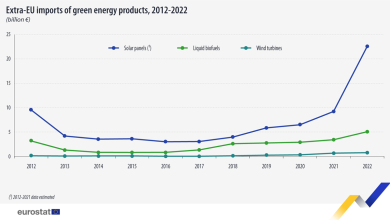EU Taxonomy: Mini Guide for Investors
Iulian Harpa is Managing Partner of HiM Public Affairs, a consulting firm operating mainly in the energy sector
What is EU taxonomy?
The EU taxonomy is a complex system to classify which parts of the economy can be marketed as sustainable investments. It includes a long list of economic activities, plus detailed environmental and social criteria that each must meet to earn a green and sustainable label. Its regulation was published in the Official Journal of the European Union on 22 June 2020 and entered into force on 12 July 2020.
Under the extended name of the first ‘Delegated Act on Sustainable Activities for the Adaptation and Combating of Climate Change’ emerged as a result of the need for regulation in the European Economic Area of resilience, sustainability and contribution to limiting the climate effects of economic activities, a common understanding platform for investors, financiers and economic actors.
Why do we need an EU Taxonomy?
Taxonomy could play an important role, helping the EU scale up sustainable investment and implement the European Green Deal. It would provide companies, investors, and policymakers with appropriate definitions for which economic activities can be considered environmentally sustainable. In this way, it should create security for investors, protect private investors from green washing, help companies to become more climate-friendly, mitigate market fragmentation and help shift investments where they are most needed.
Through the extensive consultation process in the preparation of the Taxonomy, the Commission sought to signal the adoption of this act, according to which the investment policies of European funds will be built, but also of large institutional capital holders (investment funds, pension funds, etc.).
The Taxonomy Regulation establishes six environmental objectives
- Climate change mitigation
- Climate change adaptation
- The sustainable use and protection of water and marine resources
- The transition to a circular economy
- Pollution prevention and control
- The protection and restoration of biodiversity and ecosystems
In short, the Regulation determines that in order to qualify as environmentally sustainable, an economic activity must:
- Make a substantial contribution to one of six environmental objectives
- Do no significant harm (DNSH) to the other five objectives
- Meet minimum social and governance safeguards; and
- Comply with certain technical screening criteria, specifying the conditions of ‘substantial contribution’ and DNSH for economic activities that are selected and addressed by the taxonomy.
The EU Taxonomy is designed to help investors, companies, issuers, and project promoters transition to a climate-resilient economy by providing a common language and uniform criteria to identify the extent to which economic activities may be considered environmentally sustainable. The EU Taxonomy sets performance thresholds to help parties identify environmentally friendly activities and access green financing, in order to grow low-carbon sectors and decarbonize high-carbon sectors. The Taxonomy Regulation applies to:
- Financial market participants offering financial products in the EU, including investment funds, portfolio managers, and occupational pension providers
- Large companies who are already required to provide a non-financial statement under the Non-Financial Reporting Directive; and
- The EU and Member States, when setting public measures, standards, or labels for green financial products or green bonds.
Investors challenges
While testing the application of the EU Taxonomy, investors and banks faced a number of challenges. The application of the EU Taxonomy to retail loans, trade finance transactions and general-purpose facilities – the latter constituting well over 50% of a typical bank’s balance sheet/revenue stream – was particularly testing for banks, which nonetheless managed to develop early-stage methodologies to address these specific challenges.
The availability and quality of data and info proved to be the most difficult challenge in evaluating Do No Significant Harm (DNSH) criteria, particularly when segmenting alignment by turnover and in the alignment of SMEs and non-EU based assets.
Finally, investors anticipated operational complexities in assessing and classifying multisector clients, managing increasing in documentation requirements and upgrading IT processes.
Investors’ benefits
Investors and banks identified a number of key benefits to the application of the EU Taxonomy.
- Levelling the playing field in the banking industry and reducing ‘greenwashing’ – By establishing a common set of definitions and thresholds for sustainability performance that are publicly available, the EU Taxonomy will bring consistency, transparency, and comparability across the industries.
- A homogenous and rigorous evaluation of clients’ environmental performance – Banks welcome the clarity and rigour engendered by the use of thresholds and TSC.
- Supporting bank-to-client engagement efforts – A consistent set of definitions for economic activities, along with environmental impacts and benefits, will provide banks and their clients with a common language.
- Bringing direction and confidence to banks’ clients – The EU Taxonomy will bring clear guidance and confidence to banks’ clients as they seek to identify green assets, set targets, and align their long-term business strategies to the energy transition.
- Reputational enhancement and increased business opportunities – Banks see the EU Taxonomy as a way to show they positively contribute to the economy and the energy transition.
- Potential increased demand for green and sustainable finance products.
- Boosting the availability and quality of corporate data for sustainability – The EU Taxonomy Regulation is expected to drive better data availability from corporates and banks’ clients.
- Harmonization of reporting – The EU Taxonomy will become a key reference classification scheme for several regulatory frameworks.
- Coherence and alignment with national and international standards – investors welcome the efforts made towards the overall alignment and coherence of the EU Taxonomy with existing international standards and frameworks.
Authorities and Investors’ recommendations
A set of recommendations has been put forward by investors based on an experimental application of the EU Taxonomy to banking products. These recommendations are targeted at legislators and regulators, industry standard owners and banks themselves, as follows:
- Regulators should take into account the specificities of core banking products that may limit a full application of the EU Taxonomy.
- Legislators should ensure consistency and compatibility of criteria between the EU Taxonomy and other applicable legislation and regulations, including at national level.
- Regulators should seek global alignment of taxonomies, facilitate international data collection and provide comparability mechanisms of criteria for applicability of the EU Taxonomy beyond EU borders.
- Legislators should address the timing mismatch between corporate data availability and investors’ ability to apply and disclose against the EU Taxonomy.
- Regulators should facilitate the collection and handling of data, through the development of tools to facilitate the application of the EU Taxonomy.
- Owners of frameworks, labels and certification schemes should clarify alignment with the EU Taxonomy.
- Investors are encouraged to start methodical data collection for taxonomy-relevant information as part of new origination, on a best effort basis, based on internal strategy.
- Banks and relevant industry bodies should devise industry guidelines for the implementation and application of the EU Taxonomy to core banking products.
Follow the money!
a) ESG Funds are growing and ESG index funds are outperforming – According to Harvard Law School, in 2019, assets managed by the 75 ESG Funds in Bloomberg’ annual survey of the largest ESG funds with five-year track records grew more than 34%, to $101 billion, as investors increasingly bet on securities with sustainable and ethical assurances. Nine of the largest ESG mutual funds in the U.S. outperformed the Standard & Poor’s 500 Index last year, and seven beat their market benchmarks over the past five years. In the first quarter of 2020, ESG index funds outperformed their conventional counterparts in the face of the unprecedented COVID-19 pandemic and ensuing stock market decline.
b) Climate-focused funds are also growing, due to both the potential value of sustainable investments and a growing awareness amongst some investors that climate change poses a fundamental risk to investment performance and long-term financial success.
c) EU has taken a lead by issuing an Action Plan on Financing Sustainable Growth (Action Plan) and developing the EU Taxonomy, starting with climate change mitigation and adaptation activities.
Although the EU Taxonomy is not binding on non-EU financial market participants, U.S. investors may use the Taxonomy to gauge whether an investment contributes to an ‘environmental objective,’ such as climate change mitigation or adaptation. Investments in activities that would not qualify under the EU Taxonomy, but are touted as environmentally friendly, may be subject to more scrutiny by investors or regulators.
d) Romania & Europe
The decision of the European Commission to grant a green label to gas and nuclear energy, within the EU Taxonomy, on sustainable investment requirements, is a window of opportunity for both, Romania and part of Europe.
From Romania perspective, as net energy importer for the third consecutive year, the possibility of being able to finance the cost of capitalizing on the Black Sea gas, after 10 years of indecision difficult to explain, represents a last chance. Also, for balancing the energy balance, Romania undertook the construction of two new reactors and also, for the short-term, to use small modular mini reactors – which, however, have not yet proven their maturity in other projects. According to Bloomberg, these mini reactors have received design certification from the US Nuclear Regulatory Commission, but with 17 exceptions to the licensing rules in effect!
From the European perspective, EU Foreign Representative Josep Borrell revealed that in addition to the already established routes (US, Middle East, Azerbaijan, etc.) the EU is negotiating with African gas-producing countries on expanding LNG supply. With the crisis in Ukraine jeopardizing Europe’s supply of Russian gas, there is a possibility that African gas producers, including Algeria, Nigeria, Egypt, Mozambique, Tanzania, and Ghana, could offer exports to Europe.
The EU also financially supports the ‘EastMed pipeline’, which will connect the European network to offshore gas fields in Cyprus, Israel, and Egypt.
Conclusions
The focus of the EU Taxonomy regulation is on classifying relevant activities into two main categories:
- Climate change mitigation (Mitigation) and
- Climate change adaptation (Adaptation).
In order to demonstrate that an economic activity aligns with the EU Taxonomy, users need to undertake an assessment against the key components of the framework:
- A set of six environmental objectives
- Four performance requirements
- Three types of Technical Screening Criteria (TSC).
From the financial perspective, the better relative performance of sustainable funds derives mainly from their focus on companies that have stronger Environmental Social and Governance (ESG) profiles and lower ESG risk.
EU has taken a lead by issuing an Action Plan and developing the EU Taxonomy and US are coming as well with similar policies. From our perspective, Romanian authorities and the business environment need to understand ‘quick and dirty’ what does it means and that will guide us how to follow the money path!







